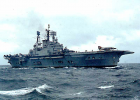
If you want detail, this site has it. I've only scratched the surface. If you had a family member in the services, this could be a great place to find out more about their experiences.
How in-depth is this site? Here's a sample:
HMS Warspite, April 13, 1940:
"13th - Took part in Operation DW, which became known as the Second Battle of Narvik.
At 0730 hours WARSPITE, flying the flag of Vice Admiral W J 'Jock' Whitworth, RVed with in position 67-44N, 13-22E with the Force B comprising destroyers FORESTER, FOXHOUND, HERO, COSSACK, BEDOUIN, KIMBERLEY, ESKIMO and PUNJABI. The force then proceeded to enter Vestfjord.
At 1038 hours off Tranoy Light destroyer ESKIMO joined the force.
At 1152 hours WARSPITE catapulted one of her Swordfish floatplanes, L9767, flown by PO F C Rice, Lt Cdr W L M Brown and L/A M G Pacey, for reconnaissance duties and with orders to bomb any suitable targets. (During her sortie the Swordfish located U 64 at anchor off Bjerkvik in Herjangs Fjord in position 68-29N, 17-30E. U 64 was dive bombed and two 100lb ASW bombs were dropped on U 64, one of which hit her bow and sinking U 64. This was the first U-boat sunk by the FAA)
At 1259 hours WARSPITE opened fire with her forward 15in turrets.
At 1530 hours WARSPITE recovered her Swordfish.
At 1755 hours WARSPITE escorted by destroyers FOXHOUND, BEDOUIN, HERO and ICARUS retired from the area and got as far as Vestfjord.
At 2050 hours she reversed course and returned to Ofotfjord to assist the damaged COSSACK."
Or this account from a British sailor on the Russia convoys:
"Now as we got clear of Iceland, the wind was howling through the rigging, sounding a warning of much worse weather to come. The cold water of the Arctic Ocean was beginning to throw its weight about, and making itself felt, as malevolent as ever, reminding us of what it was capable of. The old Gem was plunging and rolling, as were the rest of the ships. The merchant ships that we could just see in the darkness from our position at the stern of the convoy were rolling heavily under the weight of all the deck cargo they were carrying. Keeping station in these conditions and the darkness that prevailed was very difficult, and at times could be downright dangerous, for no lights other than a very dim stern light could be shown from any of the vessels. It was possible to creep almost under the stern of the one ahead of you before you saw its dark heaving bulk, for now along with the gales of wind and wild seas, we were on the receiving end of snow and rain squalls, and visibility became worse by the hour."
Link: Naval History.net

